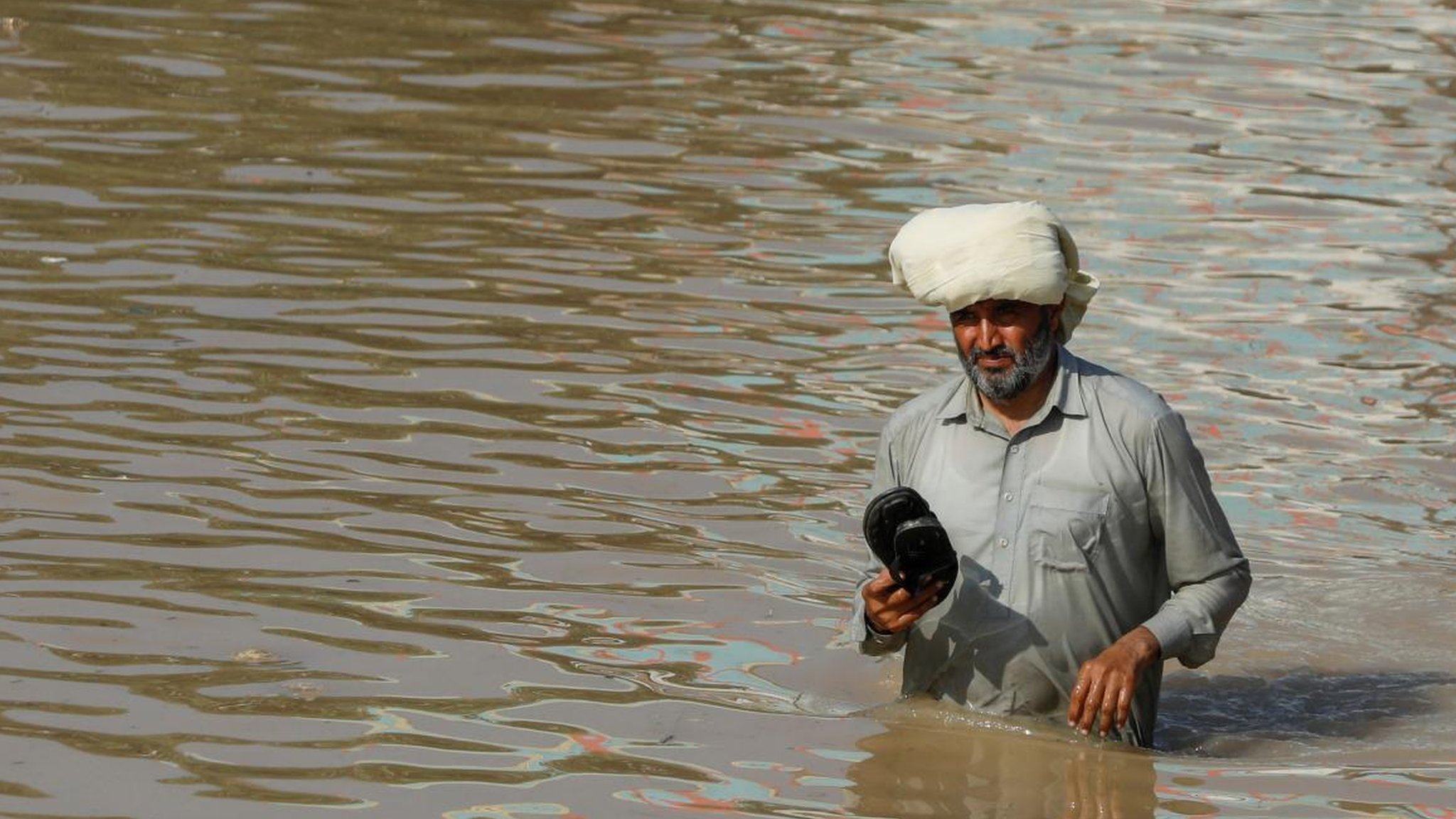Torrential rains have devastated northern Pakistan, triggering catastrophic floods that have taken hundreds of lives and left countless families without homes. Entire villages have been swept away, and many survivors are now struggling to find food, shelter, and clean drinking water. For days, relentless downpours have continued to batter the region, overwhelming rivers and dams, and submerging towns that once served as the economic lifeline for thousands of households. The sheer force of the water has left behind a trail of destruction that local officials describe as one of the worst natural disasters to hit the country in recent years.
Rescue teams have been deployed to the most affected areas, but the scale of the devastation has made emergency response efforts extremely difficult. Roads and bridges have been washed away, leaving communities cut off from outside assistance. In certain mountainous regions, helicopters are the only means of delivering aid, yet severe weather has hampered even those operations. Residents have described scenes of desperation, with people clinging to rooftops and trees as the waters rose at alarming speeds.
Pakistan’s authorities have announced an emergency situation, calling for help from global partners to provide humanitarian aid. Temporary accommodations are being established, yet these shelters are quickly filling up as more displaced families keep coming. The situation in these camps stays unstable, with not enough medical services and poor sanitation systems increasing worries about potential disease outbreaks. Medical professionals are especially worried about waterborne diseases like cholera and dysentery, which tend to spread swiftly following significant floods.
The floods have caused significant devastation to human life and caused massive economic losses. Agricultural lands have been inundated, wiping out crops that numerous families rely on for their survival. A large number of livestock have perished, depriving rural areas of essential resources for both income and sustenance. Initial evaluations point to damages totaling billions of dollars, a harsh setback for a country frequently grappling with economic difficulties. The farming industry, which provides jobs to a large segment of Pakistan’s citizens, might require several years to completely rebuild.
Climate experts have pointed to the disaster as another stark reminder of the growing threat posed by climate change. Pakistan, despite contributing relatively little to global carbon emissions, has become one of the most vulnerable countries to the effects of global warming. Rising temperatures have altered rainfall patterns, intensified monsoon seasons, and accelerated the melting of glaciers in the northern mountain ranges. These factors have combined to increase the likelihood of extreme flooding events, placing communities in low-lying areas at perpetual risk.
For those who have survived, the emotional impact is just as devastating as the physical damage. Families grieving the loss of loved ones are doing so amid the disorder, while some are frantically looking for family members who are still missing. Numerous children were split from their parents in the chaos of escaping the surging waters, and now relief organizations are striving to bring them back together. Tales of endurance are surfacing, from villagers who swam to safety after their homes fell apart, to rescuers who faced fierce currents to save families in peril.
International humanitarian organizations are mobilizing to provide relief, sending food supplies, clean water, tents, and medical equipment. Countries across Asia, the Middle East, and Europe have pledged financial assistance and resources. However, aid workers caution that relief alone is not enough; long-term recovery will require significant investment in rebuilding infrastructure and developing climate-resilient systems. Without these measures, experts warn, Pakistan will remain trapped in a cycle of disaster and recovery, with each flood undoing years of progress.
The floods have also reignited discussions within Pakistan about the country’s disaster preparedness. Critics argue that insufficient investment in flood defenses, inadequate early warning systems, and poor urban planning have all contributed to the scale of the tragedy. Many floodplains have been developed into residential and commercial zones despite repeated warnings, leaving millions vulnerable whenever heavy rains strike. Calls are growing for more comprehensive planning, better drainage infrastructure, and policies to protect high-risk areas from unregulated development.
Meanwhile, political tensions complicate the government’s ability to respond effectively. With economic challenges already straining national resources, authorities face the daunting task of balancing immediate relief with long-term reconstruction. Opposition leaders have criticized the government for being slow to act, while officials insist that the unprecedented magnitude of the flooding has overwhelmed even the most prepared systems. This tension underscores the broader challenges Pakistan faces in addressing natural disasters while navigating political and economic instability.
Local communities, however, continue to demonstrate remarkable resilience. Volunteers have joined rescue operations, often risking their own safety to help neighbors trapped by floodwaters. Religious and community organizations are opening their doors to provide shelter and distributing food to those in need. These grassroots efforts highlight the strength and solidarity of Pakistan’s people, even in the face of overwhelming adversity.
Looking ahead, the recovery process is expected to be long and arduous. Entire towns will need to be rebuilt, farmlands rehabilitated, and infrastructure reconstructed from the ground up. The task is immense, but experts emphasize that it also presents an opportunity to rebuild in ways that are safer and more sustainable. By investing in climate adaptation measures, strengthening disaster preparedness, and modernizing infrastructure, Pakistan has the chance to reduce its vulnerability to future disasters.
The flooding crisis has made clear that climate change is not a distant threat but an immediate challenge with devastating consequences. While the international community has expressed solidarity with Pakistan, questions remain about the level of support that will ultimately materialize. For many in the country, the hope is that this tragedy will serve as a catalyst for greater global action on climate resilience, not only in Pakistan but in all nations facing similar risks.
As the waters slowly recede, the true extent of the disaster is only beginning to emerge. Officials warn that the death toll is likely to rise as rescue teams reach previously inaccessible areas. The emotional scars, however, may endure far longer than the physical damage. For countless families, life has been permanently altered, and the road to recovery will be filled with challenges. Yet amid the despair, there is determination to rebuild, and the resilience of Pakistan’s people remains a source of strength in this time of crisis.




